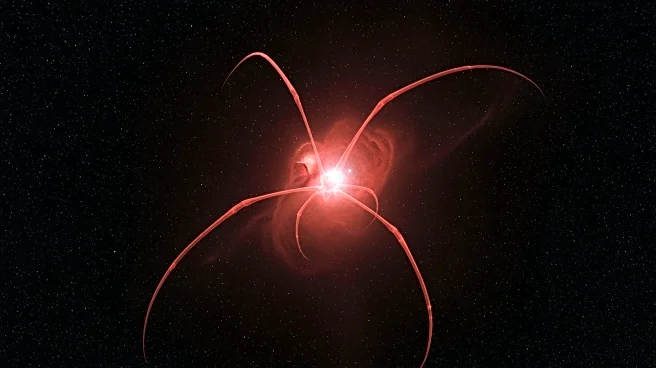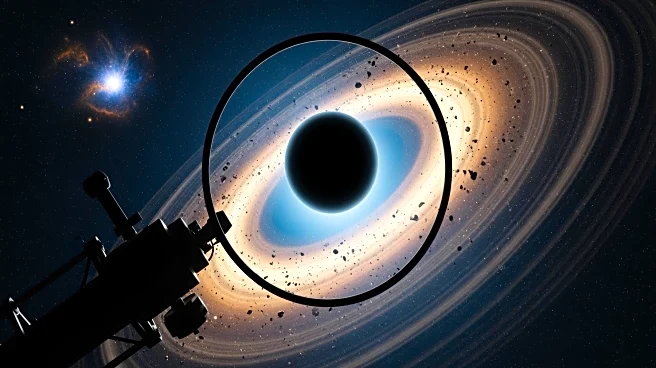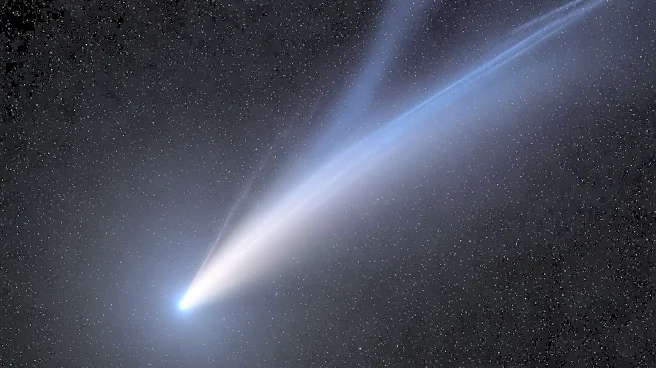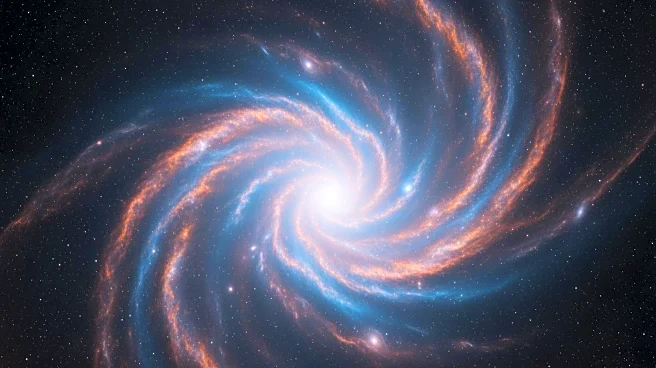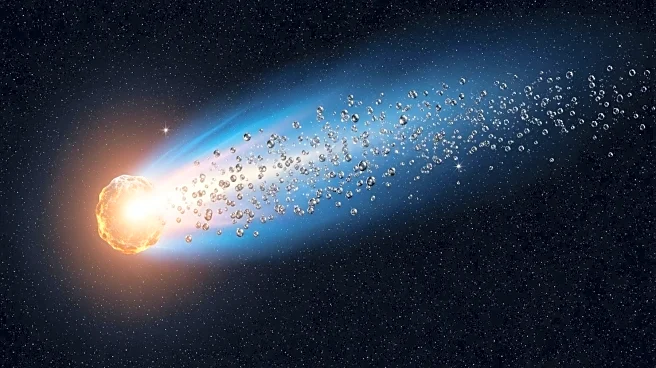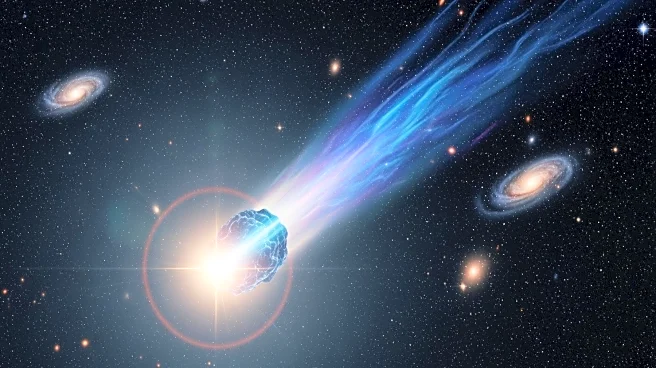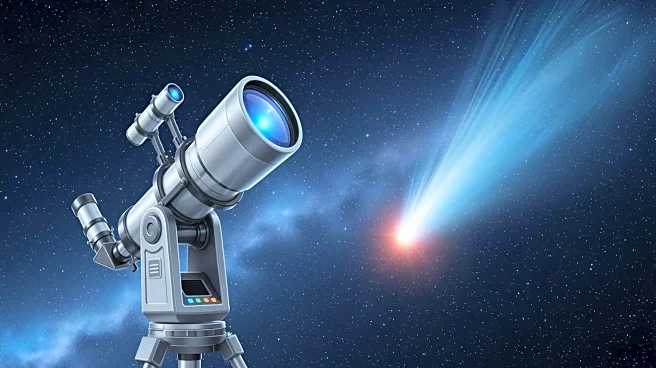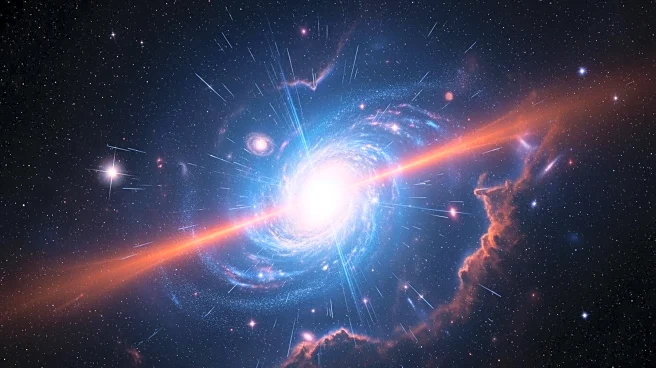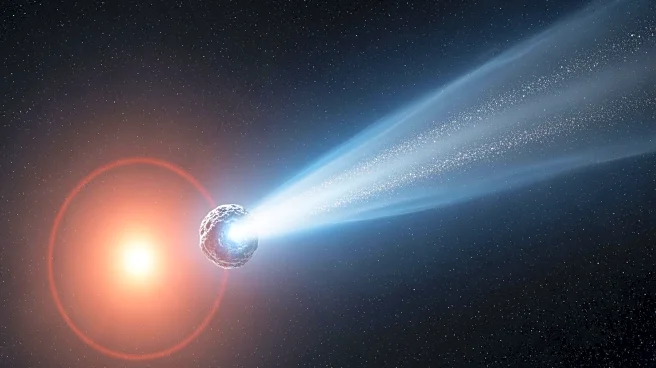What's Happening?
The James Webb Space Telescope (JWST) has captured a striking image of the Red Spider Nebula, a planetary nebula located in the cosmic landscape. This nebula is the result of a sun-like star reaching the end
of its life, expanding into a red giant, and shedding its outer layers to reveal its core. The JWST's infrared capabilities allow astronomers to view the nebula's intricate details, including its hourglass shape and the surrounding shroud of hot dust. The nebula's lobes, each three light-years long, are inflated by gas from the central star, creating a visually stunning scene. The image also features a backdrop of stars, showcasing the telescope's ability to capture detailed cosmic environments.
Why It's Important?
The JWST's observation of the Red Spider Nebula provides valuable insights into the life cycle of stars similar to our sun. Understanding these processes is crucial for astronomers as they study the evolution of stars and the eventual fate of our solar system. The detailed imagery captured by the JWST enhances scientific knowledge of planetary nebulas, contributing to broader astrophysical research. This discovery underscores the telescope's capabilities in revealing the universe's complexities, aiding in the exploration of cosmic phenomena and advancing space science.
What's Next?
Future observations by the JWST are expected to continue uncovering the mysteries of planetary nebulas and other celestial objects. Scientists will likely use the telescope's data to further investigate the composition and dynamics of such nebulas, potentially leading to new discoveries about star formation and death. The ongoing research may also influence theoretical models of stellar evolution, providing a deeper understanding of the universe's history and structure.
Beyond the Headlines
The JWST's ability to capture detailed images of distant cosmic objects highlights the importance of advanced space technology in expanding human knowledge. The telescope's findings may inspire further investment in space exploration and technology development, fostering international collaboration in the scientific community. Additionally, the aesthetic beauty of the images may enhance public interest in astronomy, encouraging educational initiatives and inspiring future generations of scientists.
